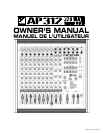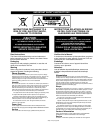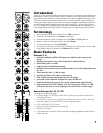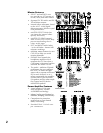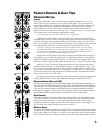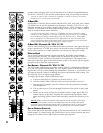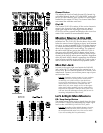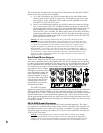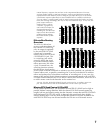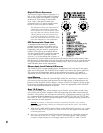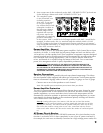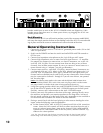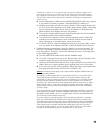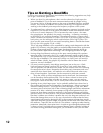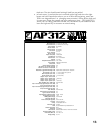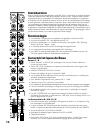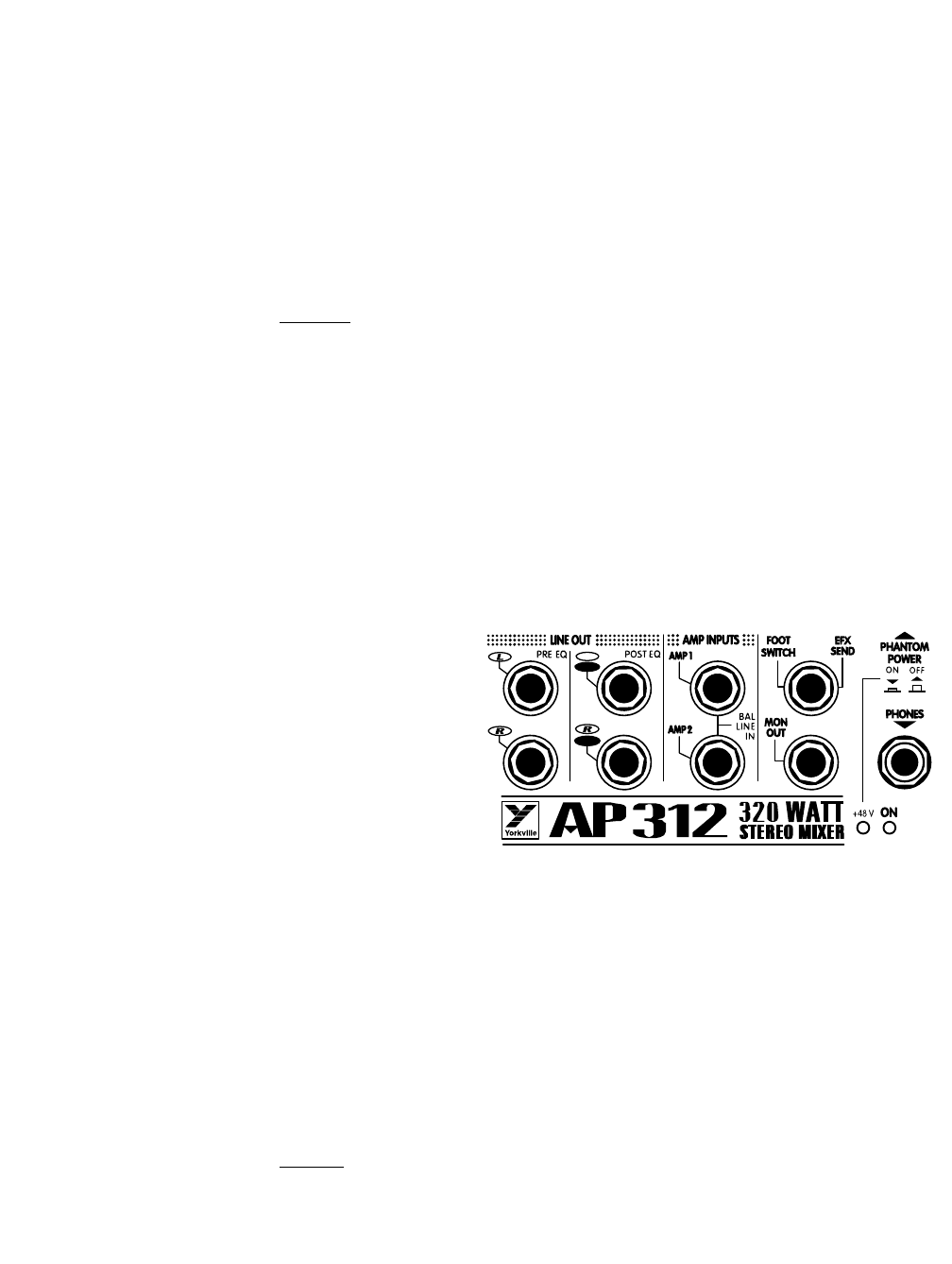
6
The MAIN faders also determine the signal levels destined for the EQ/AMP ASSIGN
button where they are directed as follows:
a) Up in the L&R position, the ASSIGN button directs the Left & Right MAIN
master signals to EQ1 and EQ2 respectively. Thereafter they go in two direc-
tions at once - to the L&R inputs of the built-in power amplifier and to the
L&R POST EQ LINE OUTPUT jacks.
b) Down in the MAIN/MON position, the ASSIGN button also does two things.
First, it sums some of the LEFT and RIGHT MAIN signals into a single mono
signal and directs it to the input of EQ1, the output of which is then split and
goes to both the LEFT power amp channel and to the POST EQ MAIN (L)
LINE OUTPUT jack. Secondly, the button takes some of the MON MASTER’s
output signal and routes it to the input of EQ2, thereafter to be split and rout-
ed to the RIGHT channel of the built in power amplifier and to the POST EQ
MON (R) LINE OUTPUT jack.
User tip: The stereo operating mode of the AP312 would be with the EQ/AMP
ASSIGN button up in the L&R position. This would supply up to 320 watts of stereo
power (160 watts/channel) plus separate L&R 9-band EQ’s for the main system speak-
ers. Power and equalization for the monitors would come from a separate power
amplifier and graphic EQ. With the EQ/AMP ASSIGN button down in the MAIN/
MON position, you now have 160 watts of mono power @ 8 Ohms plus a single 9-
band EQ for the main PA speakers, also 160 watts @ 8 Ohms and a single 9-band EQ
for the monitors. Connect main PA speakers to the AMP 1 SPEAKEROUTPUT’s and
monitors to AMP 2 SPEAKER OUTPUTS. See under SPEAKER CON-NECTIONS for
suggested speaker impedances.
Pre & Post EQ Line Outputs
These are the outputs of the L&R main mixing busses. They are all at line level (do
not connect speakers directly) and unbalanced. The PRE EQ outputs are not affected
by either of the graphic equalizers. The stereo main mix is available from them at all
times, regardless of the EQ/AMP ASSIGN button setting. These would be available
for connecting a secondary mixer perhaps for a house PA, broadcast and/or record-
ing purposes. These outputs,
although not balanced, have
been designed to supply the
noise-canceling benefits of
balanced outputs as long as
the inputs of the unit (power
amp or mixer) you are con-
necting them to have bal-
anced inputs, and you use
TRS balanced cables
The POST EQ output
signals are affected by the graphic equalizers. They are also affected by the EQ/AMP
ASSIGN button. With the button up in the L&R MAIN position, these jacks receive
the output of EQ1 at the L MAIN jack and EQ2 at the R MON jack. With the EQ/AMP
ASSIGN button down in the MAIN/MON position, the L MAIN jack receives mono
(left & right mixed together) main mix signal from EQ1 and monitor signals from EQ2.
The POST EQ outputs are best for driving power amplifiers whether for main or moni-
tor speaker systems.
EQ1 & EQ2 Graphic Equalizers
These are 9-band EQs having standard ISO octave-spaced frequencies. The Q-fac-
tor is greater in cut-mode than in boost-mode, which is desirable when using the EQ
for feedback control. Up to 12dB of cut or boost is available. For more information
about their internal routing, see under LEFT & RIGHT MAIN MASTERS and EQ/AMP
ASSIGN BUTTON above.
User tip: As with all graphic EQ’s, minimal variations above or below center settings
are always recommended. The only exception to this rule might be in the fight against
feedback, but even there the ideal solution is to separate the offending speaker from the
offending mic or at least aim them in different directions. This way the whole system’s



